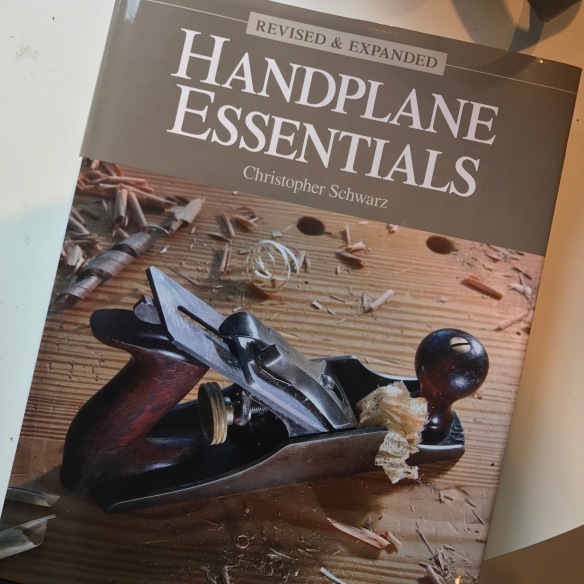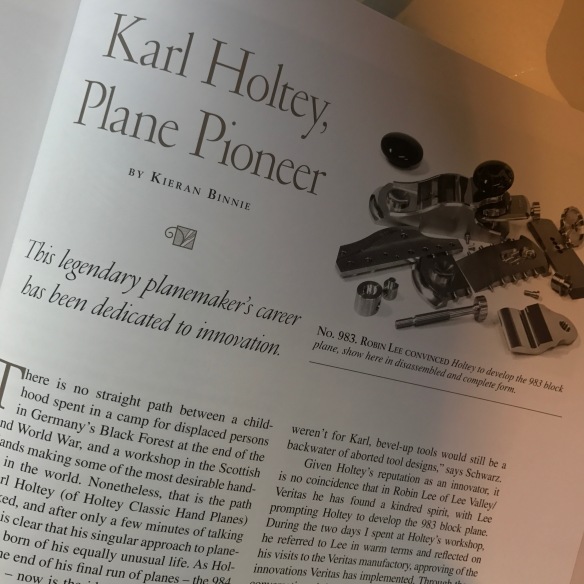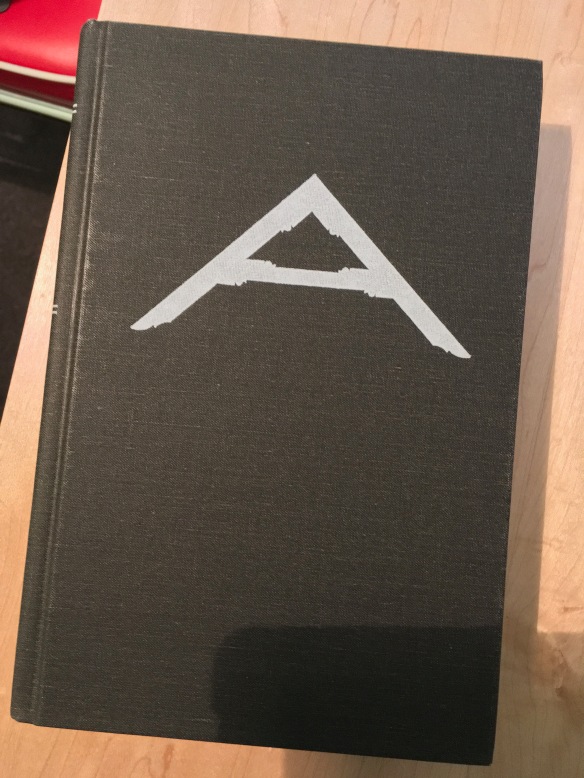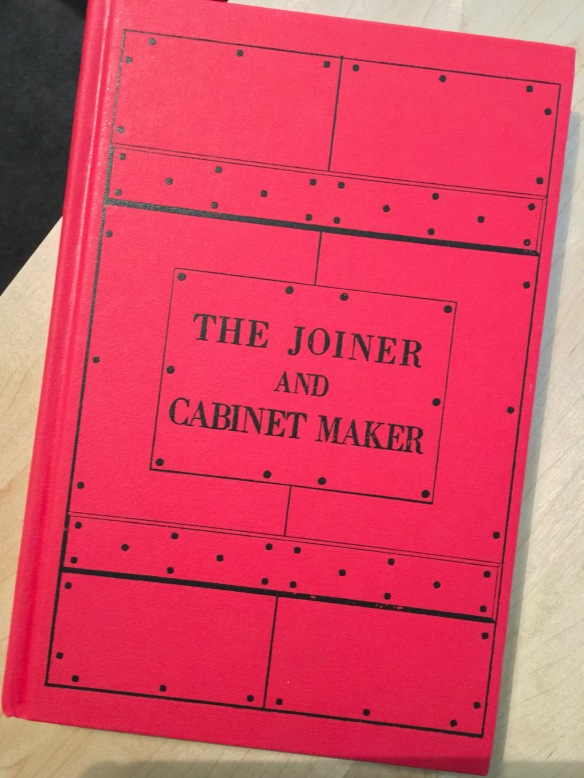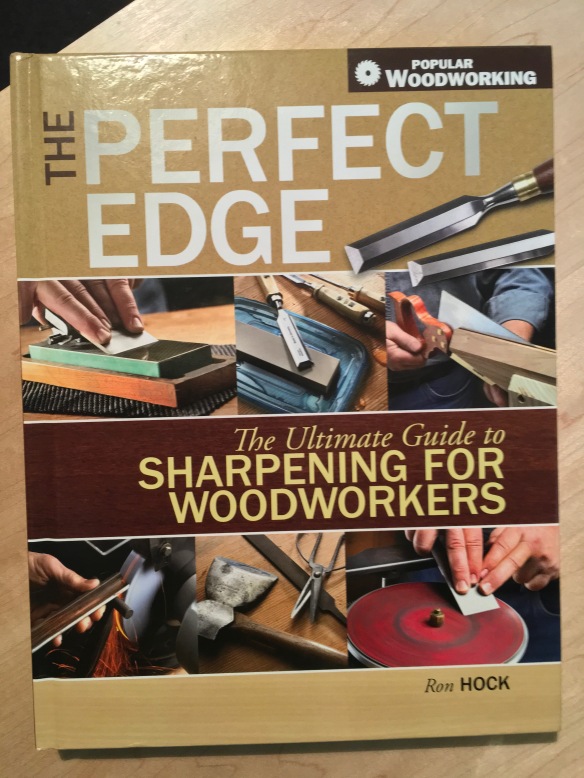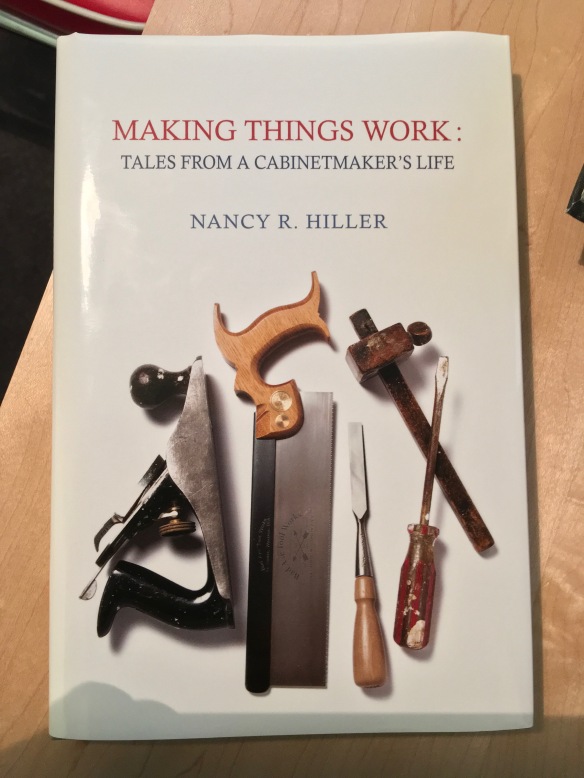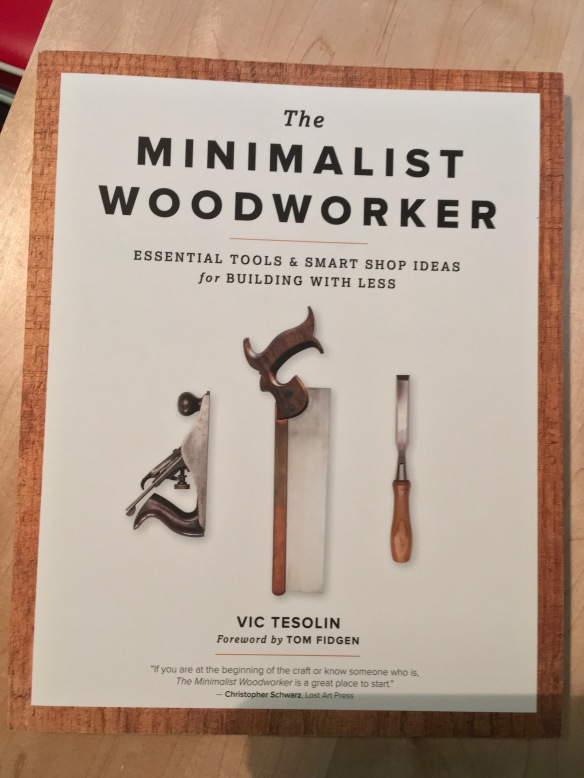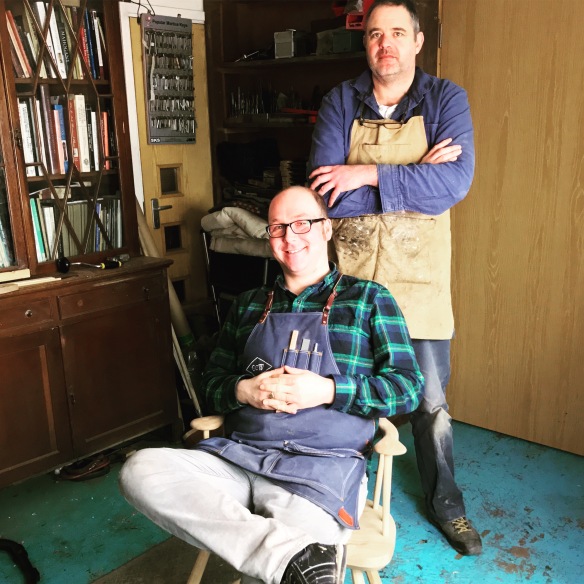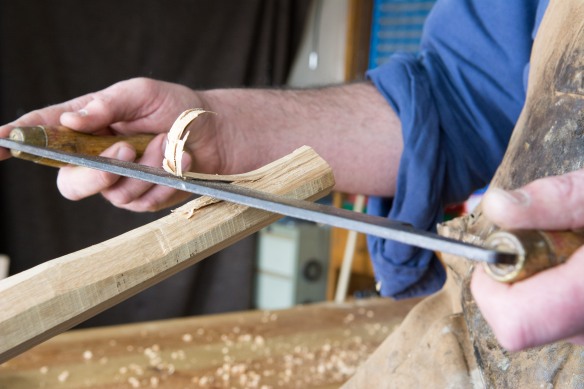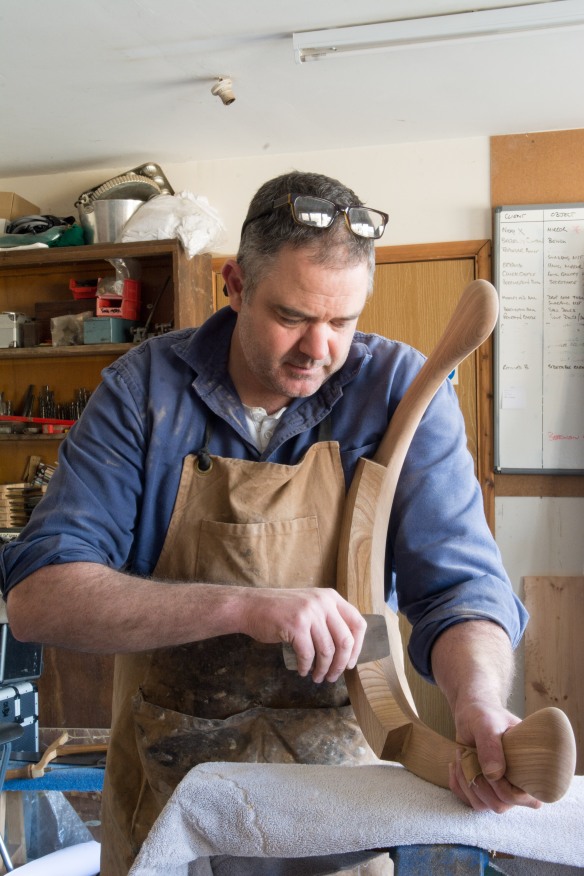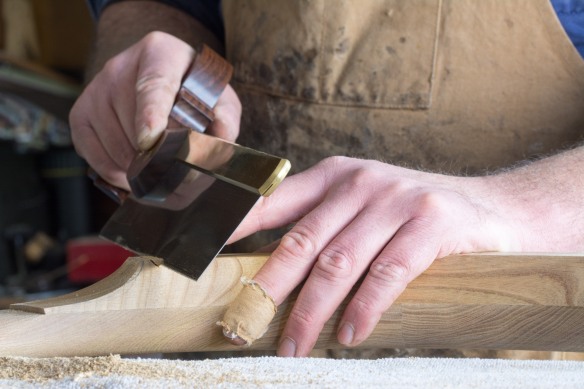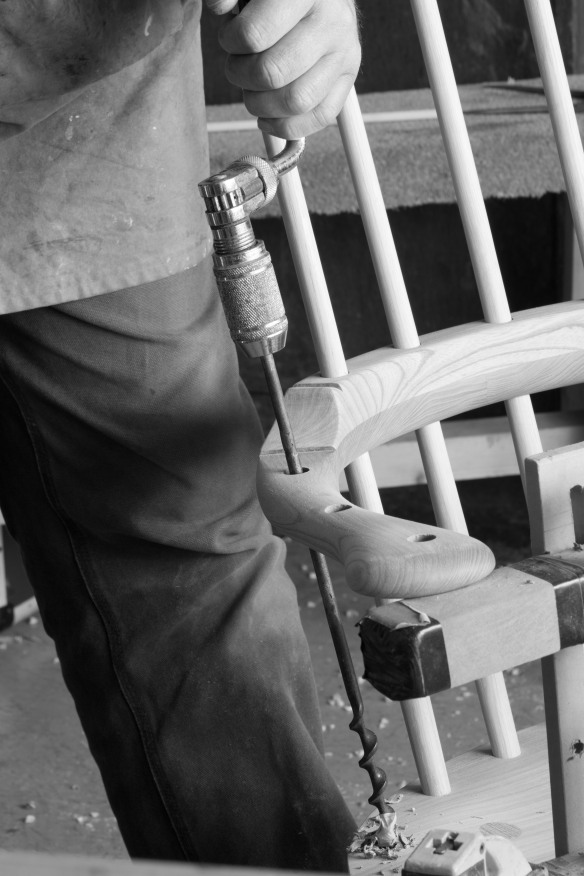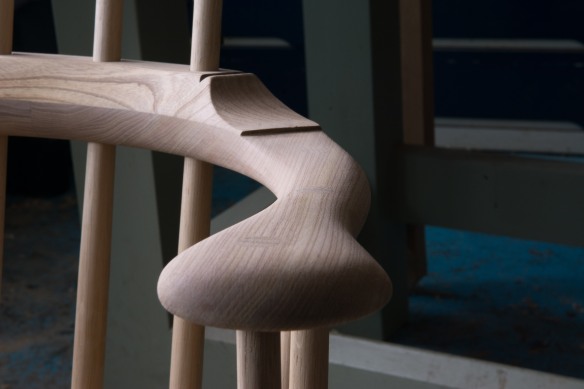Richard Maguire wrote a very interesting blog post about work holding on Friday, which came at exactly the right time for me. The main thrust of Richard’s post (although it really is worth reading in its entirety) is that clamping every workpiece to the bench is not only unnecessary, but also disrupts workflow. Now, Richard knows his workbenches, so I find it pays to give proper thought to what he says. As it happens, I received a planing stop in the post a couple of weeks ago from Peter Ross, in readiness for my Roubo bench build (and more about that soon). But on my current bench I’m limited to bench dogs, holdfasts, and clamps. These do for most tasks, but occasionally I hit an operation which these workholding methods are just not appropriate.
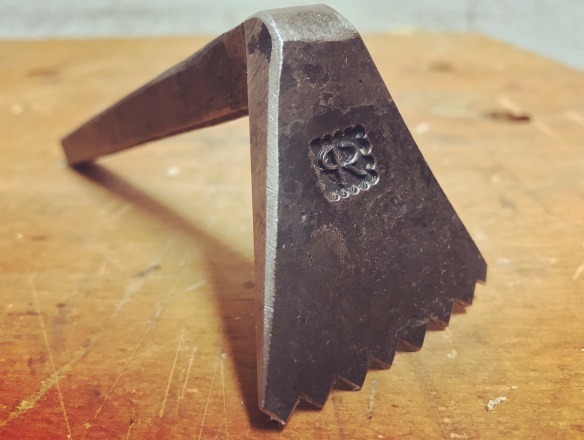
This handmade planing stop by Peter Ross is just sublime, and will perform key workholding duties on my Roubo bench
My current build (for the October issue of Popular Woodworking) is a case in point. This project calls for a shallow drawer which is grooved to accept the drawer bottom. All very conventional. But securing a narrow drawer side to plough the groove can be tricky, as I realised this morning. The drawer stock was too narrow to hold with clamps without fouling the posts of the plough plane, and I prefer not to use a tail vise and dogs to hold small stock due to the risk of the clamping pressure bowing the workpiece. While I was contemplating how to secure the drawer stock in place, Richard’s post started to play on my mind. And then I realised I already had the solution tucked away in the corner of my ‘shop.
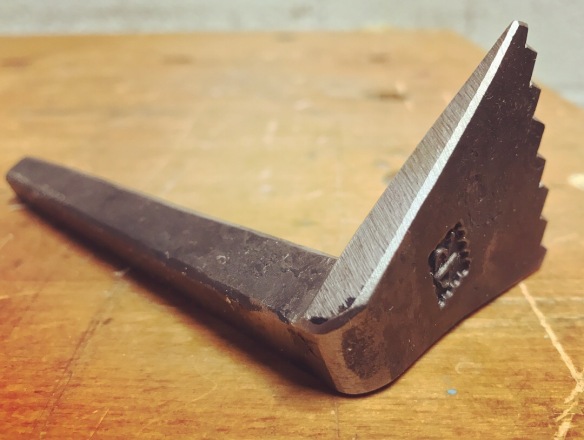
Five minutes, a length of 3/4″ ply, and a handful of self tapping screws, and I had the most redneck sticking board ever to grace a workbench. It was also incredibly effective. I always keep a box of self tapping screws on hand for jig making – they are nasty little things which I would never use for furniture, but perfect for jigs. Instead of driving the screws all the way home, I put three at varying heights to act as a rough planing stop. To prevent the drawer stock from deflecting sideways I then created a fence by driving another series of screws into the ply, leaving them proud of the surface. This positioned the workpiece with one edge hanging off the ply for the plough fence to register against. The pressure from the plane was sufficient to hold the workpiece against the two lines of screws, and with the screw heads below the surface of the workpiece there was nothing to foul the movement of the plane (as there would have been had I used clamps or a holdfast).
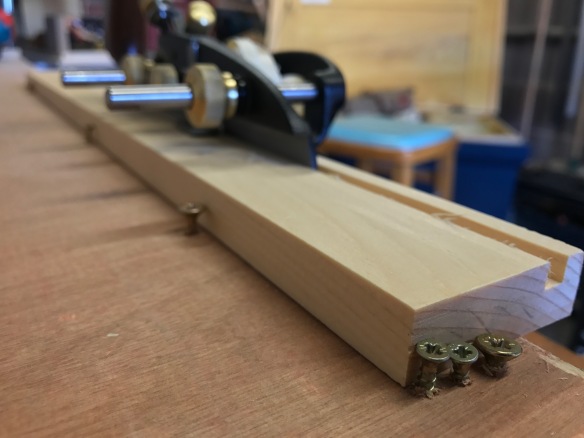
A handful of screws and some thick ply was all I needed to hold these narrow drawer components securely for grooving
Now, none of this is particularly revolutionary – this is basically a very rough version of the sticking board from Mouldings in Practice. But what I found very interesting about the whole experience was how it improved my workflow, very much as Richard had suggested. Instead of releasing clamps or winding back a tail vise, I could just pick up the unsecured workpiece to check my progress. This encouraged a much smoother workflow, and smooth leads to fast. After ploughing several grooves, I also needed to cut a stopped groove, and I used the same sticking board. It worked even better in this application – without needing to worry about the plough plane fance, I was able to butt the workpiece against a screw head, and hold it in position using only pressure from the small router plane. Simple, intuitive, and quick. And even better, at the end of the operation I removed the screws and put the ply back in the corner until I need it again. Now that’s my sort of jig.
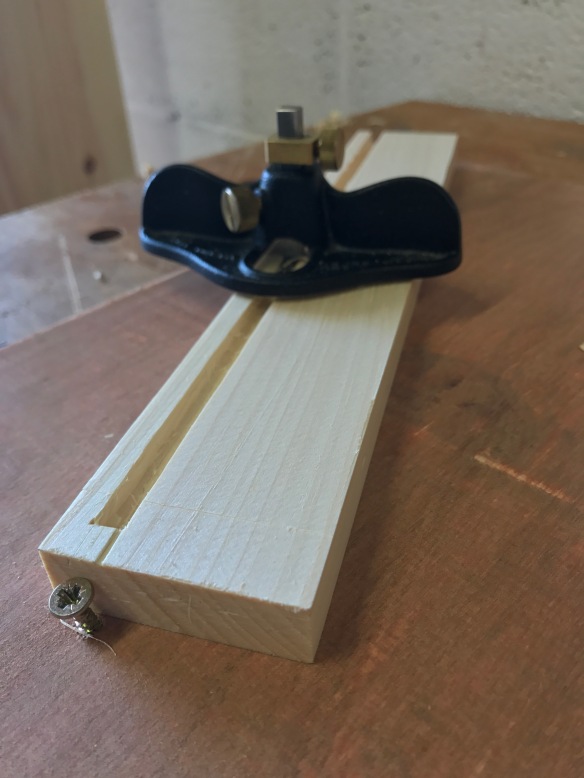
Hand pressure and a screw keeps the workpiece in place while cutting the stopped groove
Based on this brief experiment I can’t help thinking about how I might apply the same principles for other workholding tasks, so that I do not have to rely on anchoring the workpiece down. I’m also greatly looking forward to using the Peter Ross planing stop once the bench build is complete. Roubo is coming.

